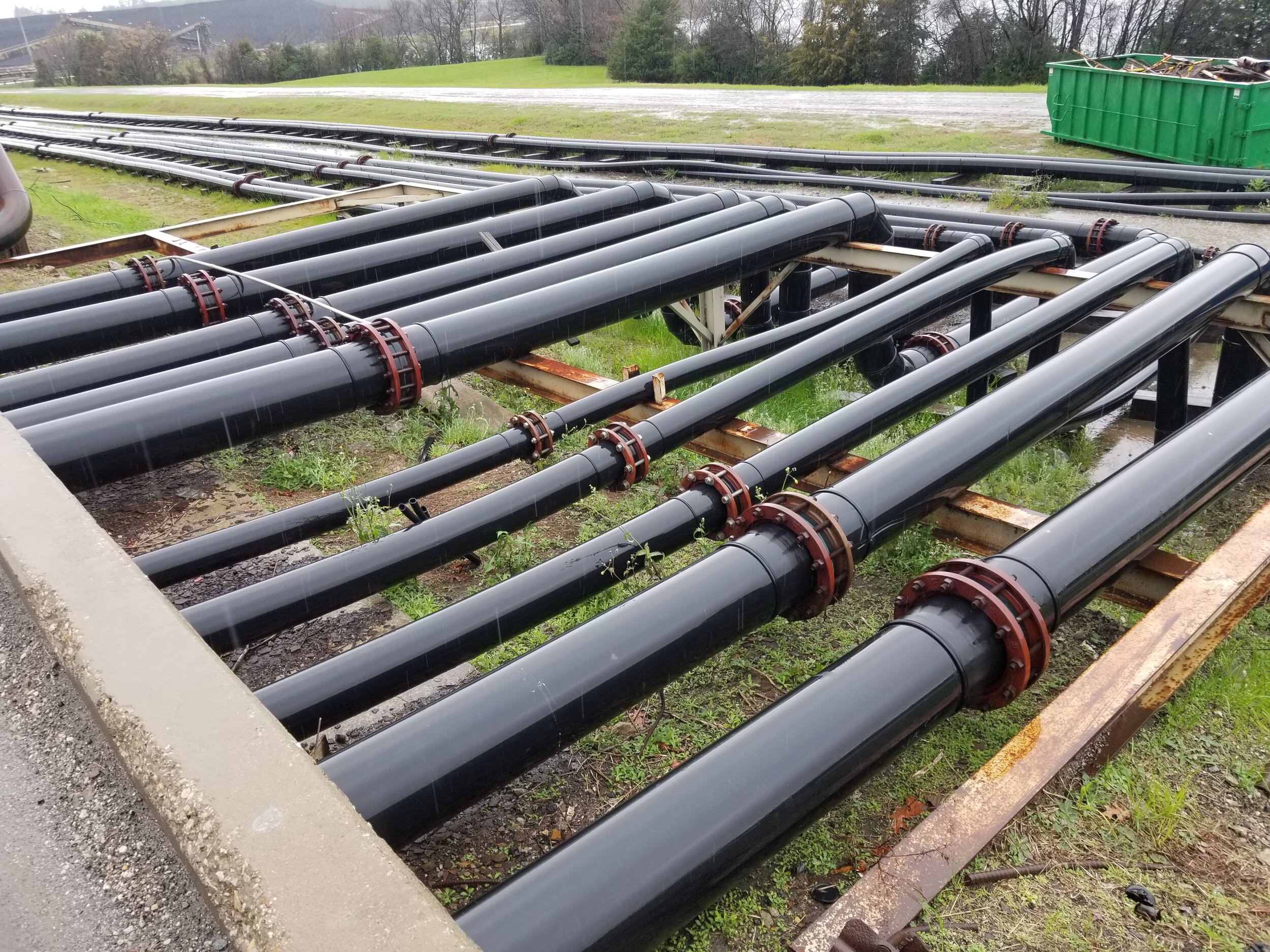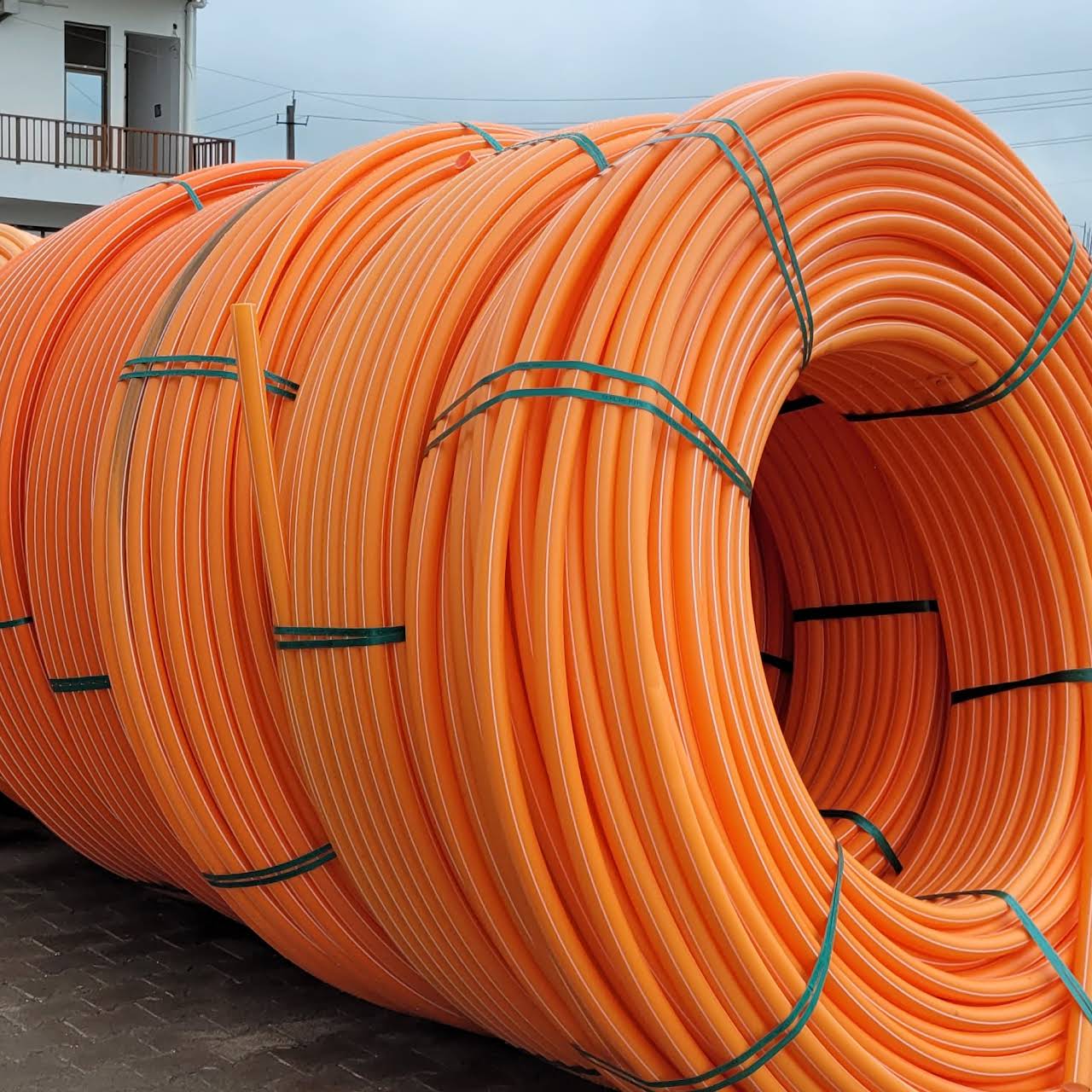How to Install hdpe pipe fittings Midland TX for Reduced Maintenance
Wiki Article
Explore the Manufacturing Refine Behind High-Quality HDPE Pipeline and Its Applications
The manufacturing procedure of high-grade HDPE pipelines is elaborate and methodical. It starts with the choice of raw products that enhance efficiency. Following this, ethylene undergoes polymerization to create material, which is after that formed with extrusion. Quality control is vital, ensuring that the final item meets strict criteria. Nevertheless, the trip of HDPE pipes does not end with production. Their applications across numerous sectors expose a broader significance worth analyzing.Recognizing HDPE: Residences and Advantages

High-density polyethylene (HDPE) is a functional thermoplastic known for its sturdiness and resistance to various environmental aspects. This product displays exceptional tensile strength, making it suitable for requiring applications. Its low-density framework adds to a light-weight product, assisting in convenience of taking care of and setup. HDPE likewise showcases exceptional resistance to chemicals, which decreases deterioration when exposed to harsh compounds.
The material's reduced wetness absorption better enhances its durability, making it suitable for usage in pipelines and storage tanks. Additionally, HDPE is resistant to ultraviolet (UV) radiation, making certain that products maintain their integrity also when exposed to sunshine. Its versatility enables for the development of detailed shapes without compromising strength. The eco-friendly nature of HDPE, frequently obtained from recycled products, contributes to its appeal, advertising sustainable methods in manufacturing. Overall, these properties and benefits make HDPE a preferred selection for numerous commercial and consumer applications.
Raw Product Selection for HDPE Manufacturing
The option of basic materials for HDPE manufacturing is vital to confirm the last item satisfies the wanted specs and quality standards. High-density polyethylene (HDPE) is largely created from polymerized ethylene, originated from nonrenewable fuel sources such as gas or unrefined oil. The quality of these feedstocks substantially influences the mechanical and thermal residential or commercial properties of the last HDPE.Additives likewise play a substantial function in boosting HDPE's performance, consisting of anti-oxidants, UV stabilizers, and colorants, which improve toughness and resistance to ecological elements. The selection procedure must think about not just the chemical make-up of the raw products yet also their processing qualities to assure efficient manufacturing.
Additionally, the sourcing of resources ought to focus on sustainability and conformity with ecological guidelines, as liable methods are important in today's market. Eventually, cautious raw product option lays the structure for generating high-grade HDPE pipelines suitable for varied applications.
The Extrusion Refine: Forming HDPE Pipeline
The extrusion process plays a vital role in shaping HDPE pipes, starting with precise material preparation techniques that guarantee ideal flow and consistency. Equally important is the layout of the die, which straight influences the last measurements and surface area high quality of the pipe. Together, these factors add substantially to the efficiency and high quality of HDPE pipe production.Product Prep Work Strategies
Efficient manufacturing of HDPE pipes starts with careful product prep work strategies, specifically the extrusion process. Throughout this stage, high-density polyethylene material is initial dried to eliminate moisture, making sure ideal circulation characteristics. The material is then fed into the extruder, where it undergoes home heating and melting, changing into a thick state. This heating process is carefully regulated to preserve the material's honesty and performance. The liquified HDPE is compelled with a die, forming it into a constant pipeline type. Proper temperature level management throughout extrusion is vital, as it directly affects the product's properties and the last product top quality. As soon as shaped, the HDPE pipeline is cooled down and reduced to defined lengths, all set for subsequent processing and applications.Die Design Importance
Precision in die style plays an important function in the extrusion process of HDPE pipelines. The die works as the last shaping device, straight influencing the pipeline's measurements, wall surface density, and surface area finish. A well-designed die warranties consistent material flow, reducing flaws such as abnormalities and vulnerable points. The geometry of the die have to be optimized to fit the specific residential properties of HDPE, including its viscosity and thermal actions during extrusion. Additionally, the cooling rate of the product as it goes through the die can significantly affect the pipe's architectural stability. Spending in advanced die technology is vital for producers aiming to produce top notch HDPE pipelines that fulfill sector standards and customer assumptions.Quality Assurance Procedures in HDPE Production
Numerous aspects affect the quality of HDPE pipeline manufacturing, efficient high quality control measures are essential to ensure consistency and integrity in the final product (custom hdpe pipe manufacturing Midland TX). Key high quality control methods consist of strenuous material examination, verifying that the raw polyethylene satisfies recognized standards for pureness and thickness. Throughout the extrusion process, parameters such as temperature level, pressure, and cooling time are very closely monitored to keep dimensional accuracy and architectural integrityIn addition, post-production testing is essential; suppliers typically conduct hydrostatic examinations to evaluate the pipeline's stamina and resistance to pressure. Visual evaluations for surface area problems further boost top quality guarantee. Certification from appropriate criteria companies, like ASTM or ISO, offers an added layer of credibility. By applying these extensive quality control steps, hydraulic hose clamps makers can decrease defects, boost efficiency, and ensure that the HDPE pipes fulfill the certain demands of numerous applications, ultimately resulting in customer complete satisfaction and count on the product.
Applications of HDPE Pipe Across Industries
HDPE pipelines are used throughout different sectors as a result of their longevity and adaptability. In water circulation systems, they assure reliable delivery, while in wastewater management, they offer reliable services for waste transport. Furthermore, farming irrigation networks gain from HDPE's resistance to corrosion and versatility, making it a perfect option for modern-day farming practices.
Water Circulation Solutions
A substantial variety of markets rely on high-density polyethylene (HDPE) pipes for efficient water circulation systems. Understood for their sturdiness and resistance to deterioration, HDPE pipes are commonly made use of in community water supply networks, agricultural watering, and commercial applications. Their light-weight nature assists in easy handling and installation, minimizing labor prices and time. Additionally, HDPE pipelines can suit various pressure levels, making them appropriate for both reduced and high-pressure systems. hdpe pipe suppliers Midland TX. The versatility of the product permits smooth combination right into existing infrastructure, reducing the requirement for considerable excavation. HDPE's resistance to chemical leaching assurances that the water delivered remains risk-free and tidy, making it an excellent choice for maintaining the high quality of drinkable water across numerous markets.Wastewater Management Solutions
Reliable water distribution systems also lead the way for cutting-edge wastewater administration remedies, where high-density polyethylene (HDPE) pipes play a considerable duty. Popular for their longevity and resistance to corrosion, HDPE pipes are suitable for moving wastewater in numerous settings. Their flexibility allows for simple installment in complex settings, lessening the demand for comprehensive excavation. Furthermore, HDPE's smooth indoor surface area reduces rubbing, enhancing circulation prices and effectiveness. These pipelines are also resistant to chemical leaching, making sure that contaminants do not endanger the surrounding environment. Industries, communities, and therapy centers significantly count on HDPE pipelines for their integrity and durability, making them a favored selection for modern wastewater monitoring systems. This versatility underscores the essential importance of HDPE pipelines across countless applications.Agricultural Irrigation Networks
Agricultural irrigation networks benefit substantially from making use of high-density polyethylene (HDPE) pipes, which offer efficient and trustworthy water shipment to plants. HDPE pipelines are lightweight, making them very easy to deliver and set up, while their flexibility enables for different setups in varied terrains. These pipes show excellent resistance to corrosion, chemicals, and UV radiation, guaranteeing longevity in extreme farming atmospheres. Furthermore, their smooth indoor surface lessens friction loss, enhancing water circulation and lowering power prices related to pumping. The long life of HDPE pipelines, often going beyond 50 years, contributes to reduce upkeep and substitute expenses. Farmers increasingly count on HDPE pipes to enhance irrigation performance and advertise sustainable agricultural techniques, inevitably leading to enhanced crop yields and source preservation.
Future Fads in HDPE Pipe Modern Technology
As the demand for lasting and efficient facilities grows, developments in HDPE pipeline technology are positioned to change various markets. Arising fads include the assimilation of wise technologies, such as sensing units and IoT capacities, which facilitate real-time surveillance of pipe conditions, lowering maintenance costs and stopping leaks. Furthermore, the advancement of advanced manufacturing methods, such as 3D printing, is making it possible for the production of facility, customized pipe designs that deal with certain task needs.The focus on recycling and circular economic climate practices is driving the innovation of HDPE pipes made from recycled products, improving sustainability. Enhanced jointing approaches, such as electro-fusion and mechanical installations, are additionally improving setup performance and integrity. The growing focus on environmental policies is pushing producers to embrace greener production procedures, ensuring that HDPE pipelines not only fulfill market requirements yet additionally foster a more sustainable future for facilities growth.
Frequently Asked Questions
Exactly How Does HDPE Contrast to Other Plastic Products?
HDPE outshines many various other plastic products regarding resilience, chemical resistance, and versatility. Its low density and high tensile toughness make it excellent for different applications, often exceeding options in both performance and durability.What Are the Ecological Impacts of HDPE Manufacturing?
The environmental influences of HDPE manufacturing include greenhouse gas discharges, power consumption, and prospective pollution from manufacturing procedures. Furthermore, inappropriate disposal can lead to soil and water contamination, raising problems regarding long-term ecological effects.Can HDPE Piping Be Reused?
Yes, HDPE pipelines can be reused. Several centers accept utilized HDPE for handling, changing it into brand-new products. This reusing contributes to sustainability initiatives, minimizing plastic waste while saving sources and power in the production cycle.What Is the Life Expectancy of HDPE Pipeline?

How Do Temperature Variants Impact HDPE Pipe Performance?
Temperature level variants considerably influence HDPE pipe efficiency, affecting flexibility and stamina. Heats can lead to softening, while reduced temperatures might cause brittleness, inevitably affecting the pipe's resilience and suitability for various applications in varied atmospheres.Report this wiki page